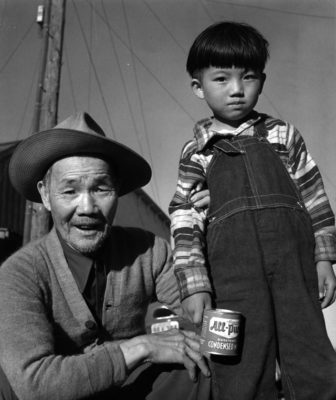One of the prettiest ways to get from downtown Santa Cruz to sprawling, redwood-shaded San Lorenzo Park is to take the short stroll across the San Lorenzo River via the Chinatown Bridge. This scenic pedestrian walkway offers a great view of waterfowl and other bird life in the willows and reeds of the riverbanks, but it offers something else, too – a window into an intriguing chapter of Santa Cruz history. Like the eye-catching sculpted Dragon Archway that welcomes pedestrians to the bridge, this chapter is colorful, a little enigmatic, and steeped in the culture of the Chinese immigrants who helped shape the Golden State into what it is today.
Stand with the Dragon Archway at your back looking toward downtown Santa Cruz, and you’ll see a peaceful office complex with a pebbled walkway meandering through. This is the site of Santa Cruz’s last Chinatown. Now imagine that the levees behind you don’t exist, and in their place are river shallows blurring into a sloping floodplain. Closest to the water you see garden plots and wooden shacks on stilts; farther up the lane, on higher ground, ramshackle wooden houses line the road in sharp contrast to the grander buildings of the downtown business district looming beyond.
This is Birkenseer’s Chinatown, named after the landlord who rented to Chinese residents and merchants after an 1894 fire drove them from their settlement a few hundred yards north. In his excellent research on this topic, local historian Geoffrey Dunn explains that there had been other Chinatowns in Santa Cruz starting in 1859, their mostly male residents having emigrated from China in the Gold Rush. As recently as 1890 the county had claimed a population of 785 Chinese living in small settlements from Davenport to Watsonville, fishing, growing produce, working on railroads, operating laundries, selling Chinese herbs and goods, and working as cooks and servants.
As anti-Chinese sentiment swept across California in the late 1800s, Chinese communities were forced into an increasingly tenuous existence at the margins of the legal economy. After the 1906 earthquake, many of the Chinese residents of Santa Cruz returned to San Francisco and the relative security and prosperity of the established Chinatown there, leaving the small but colorful Birkenseer’s Chinatown behind. During the 1920s and 30s, the gambling halls, bordellos and opium dens of Santa Cruz’s Chinatown drew thrill-seekers and partiers from around the region, and though families and legitimate businesses thrived there, it was known primarily in the public imagination as a red-light district.
In time the population of Birkenseer’s Chinatown dwindled as people moved away and older bachelors passed on. Chinese men in California had always vastly outnumbered Chinese women, and that was especially true in Santa Cruz County, which held the dubious distinction of having the most unbalanced ratio of Chinese men to women in the state; it was challenging for the population to sustain itself.

By 1955, just four households remained in Santa Cruz’s Chinatown. On the night of Dec. 22, 1955, after weeks of heavy rain across the entire state, the San Lorenzo River overflowed its banks and inundated downtown in a historic breach known as the Christmas Flood of 1955. Dunn describes the destruction as related to him by Santa Cruz businessman George Ow, who grew up in Chinatown. As redwood trees, cars and parts of houses swept past on the wild muddied river, Chinatown and its history were carried away too, chunk by chunk.
Four years later the Army Corps of Engineers embarked on a huge flood control project in Santa Cruz, and the city redeveloped the site where the old Chinatown once stood, forever burying it from view. The Dragon Archway, with its brilliantly hued tile mosaic water dragon and its graceful arch festooned with lanterns and poetry, stands as a reminder that beneath the surface of our modern cityscape lie layers and layers of stories and cultures ready to be rediscovered.
George Ow remembers his family history, part of the Santa Cruz Museum of Art & History’s exhibit Guided by Ghosts.
Read about the Chinese Gate in Evergreen Cemetery and a forested hiking trail that follows a narrow-gauge railbed laid by Chinese laborers.
